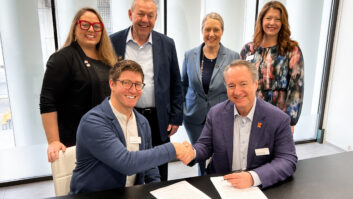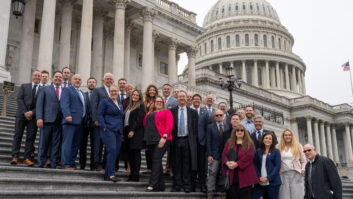A Q&A with CEDIA’s New Director of Workforce Development, Tommy Tabor
RESI: Can you explain your background and how you ended up at CEDIA as the director of workforce development?

TOMMY TABOR: Prior to joining CEDIA, I spent nearly eight years as the director of operations for a nonprofit workforce development organization that partners with public workforce development boards to provide jobseekers with employability skills, occupational skills and work-based learning experiences that lead to industry recognized credentials and employment. I also spent over 11 years in various leadership positions at two community development associations that represented and supported community-based organizations that provide human services, develop affordable housing, create economic opportunities and revitalize communities. I’m an Indianapolis native and a graduate of Indiana University—Purdue University Indianapolis (IUPUI) where I majored in Urban Affairs and Nonprofit Management. I hold a Master of Public Affairs, a Bachelor of Science in Public Affairs and a Graduate Certificate in Nonprofit Management. I was drawn to the position because it gives me the opportunity to utilize my professional experience to help CEDIA build a skilled workforce for the home technology industry that actively participates in occupational skills training programs, earns industry recognized credentials and obtains employment with and/or advances their careers with member companies.
RESI: Developing the workforce is one of the key areas outlined in CEDIA strategic plan, what has been your approach to begin the framework for CEDIA’s workforce development program?
TT: Given that I’ve only been on the CEDIA team for a little over two months, my primary focus has been on the development of a strong foundation on which to grow our programming. To this point, we have made some good progress in developing the foundation for what will ultimately make this initiative successful. We’ve created an action plan that will help us get and stay on course. A workforce development working group has been established with a core of CEDIA members that will advise on the strategic direction. Finally, we are drafting our outreach and recruitment plans, which include collateral that can be used to talk to career counselors and academic advisors.
RESI: In terms of the action plan, where will you be by the end of the year?
TT: By the end of the year, we will be in the final stages of implementing a holistic New Entrant Training and Certification Program that packages components of ESPA’s EST, CEDIA ‘s ESC, CEDIA’s ESC-T, OSHA 10 and basic employability skills with lectures, classroom activities, online activities, work and learn opportunities with member companies, student training materials needed (books, tools, supplies, etc.) and testing/certification fees. The program will be designed to meet the educational needs of individuals who are not yet employed in the industry.
We will also be working to reduce or eliminate the cost burden on new entrants by obtaining Eligible Training Provider and Program level status from key states, which will allow us to receive federal and state funding for training services from American Job Centers and Adult Education Providers. The program will be piloted at our new HQ in suburban Indianapolis and eventually rolled out to other high member markets in the next year or so.
We, of course, will keep members updated on our progress and on the ways in which they can help this initiative from a grassroots level in their local market.







